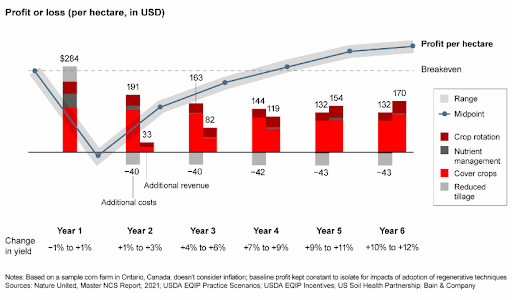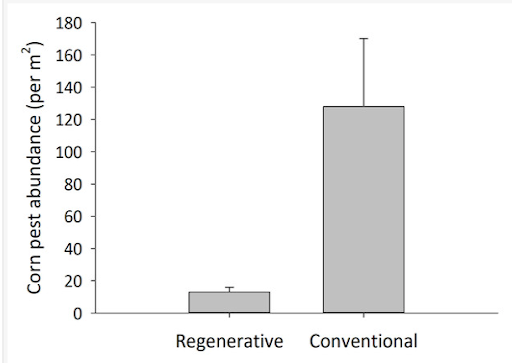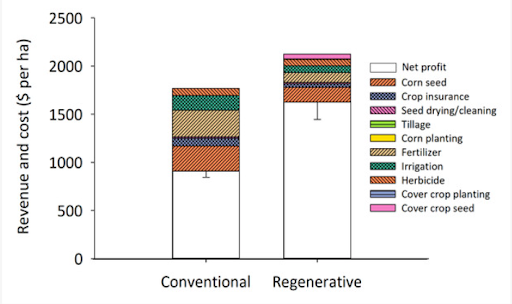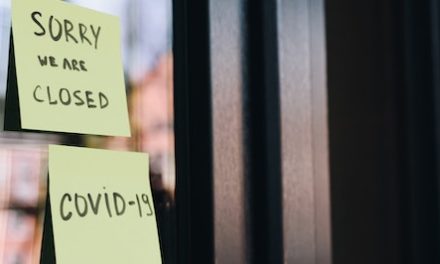Supervised by: Jonathan Bert McLelland Jr. BA, MA. Bert completed an interdisciplinary Bachelor of Arts in Political Theatre at the University of Alabama (UA). Bert then completed a Master of Arts at UA in Communication Studies, focusing on rhetoric and political discourse. In 2020 (in the course of this degree) he co-authored two academic papers which have since been published. Bert has recently completed a second MA in Public Policy at King’s College London.
As a professional Bert has worked on multiple political campaigns in Britain and America. He was an intern on the 2018 Alabama gubernatorial campaign of Democratic nominee Walt Maddox, and in 2019 he worked in Cardiff as a communications officer with the People’s Vote Campaign. During the 2020 election, Bert worked as a digital organizer and debate strategist for a congressional campaign and then ran social media for the first Democratic state senate campaign to unseat a Republican in 35 years.
Abstract
This paper seeks to summarize the economic impacts and contexts of implementing regenerative agricultural techniques in the U.S. through an analysis of the policies surrounding regenerative agriculture in the U.S. and abroad; the current policies in place that incentivize unsustainable agricultural practices, specifically through government subsidies and crop insurance programs; the adjacent industry impacts that widespread implementation would cause, and the profitability of sustainable agriculture for farmers on an individual scale. The areas of research were selected as the primary concerns that impede sustainable development. The circumstances of these concerns – their merit and potential solutions – will be offered to give the best idea of how regenerative farming can progress in the U.S.. The findings of this paper conclude that regenerative agriculture is a profitable solution to both the degradation of farmland and the question of carbon sequestration. The means by which this would be implemented requires reform of the Federal Crop Insurance Program to support crop farming and encourage long term efficiency. The policies encouraging this should be modeled after countries, such as New Zealand, that have eliminated government subsidized agriculture. This would not only foster regenerative farming that is beneficial for the environment but it would lead to a more profitable agricultural sector – conserving expenses on pesticides and other costs of traditional commercial farming, and creating profitable crop yields in the long term.
Introduction
Currently in the United States, the climate crisis has integrated itself more into societal life than previously speculated. As innovative solutionists begin to work towards sustainable alternatives, researchers and modern-day farmers have taken it upon themselves to initiate their own systems of sustainable combat; regenerative farming, a fairly contemporary method of sustainable agriculture involving practices which sequestering carbon, revitalize soil, and ensure the continual reuse of land for produce production. Currently, policies and acts have been implemented to support the spread of regenerative agriculture and aid the move towards sustainability nationally. Government intervention such as the Federal Crop Insurance Program in the 2018 Farm Bill disrupt the progress towards sustainable development by offering a counterintuitive incentive to continue traditional destructive farming practices.
Regenerative farming is a holistic agricultural system that ensures ecological benefits, attempting to help the climate crisis through restoring the land’s natural cycles (Regenerative Agriculture, n.d.). The regenerative philosophy goes against the industrial agriculture methodology, allowing nature and agriculture to work simultaneously while soil and nutrient cycles proceed down their natural path (Regenerative Agriculture, n.d.). In contrast to regenerative farming, industrial farming does the complete opposite. It utilizes practices including monocropping: the system of only planting a singular species of a crop repeatedly. This results in the depletion of the nutritional quality of soil (How Industrial Agriculture Affects Our Soil, 2018). Monocropping is a catalyst for numerous environmental detriments, resulting in not only the erosion of soil, but also requiring the use of harmful pesticides and fertilizers (How Industrial Agriculture Affects Our Soil, 2018). The residue of these chemicals inadvertently spreads into soils, resulting in ecological strain. In any case, regenerative agriculture could potentially be the future of America’s farming industry, rescuing our planet from the dire threat which looms on the earth’s environmental frontier: the climate crisis.
In the United States of America, the agriculture industry is heavily regulated by various levels of its government (How Can the Government Regulate Farming?, 2018). In the U.S., The Department of Agriculture is one of the dominant divisions governing the farming industry; it acts as an umbrella for agencies like the Farm Service Agency, and the Natural Resource Conservation Service (FACT SHEET Farm Service Agency Programs BACKGROUND, 2016). These agencies provide leadership, agriculture, natural resources, and according to the USAD itself, “helping rural America to thrive” (About the U.S. Department of Agriculture, n.d.). The government plays an active role in the agricultural field, providing support and direction.
In order to ensure that regenerative agriculture will proliferate, governmental action will need to be taken place. Currently, the United States of America’s legislative policies and acts take place to support the agriculture industry through: crop insurance, nutrition assistance, commodity support and conservation (USDA ERS – Agriculture Improvement Act of 2018: Highlights and Implications, 2018). One of the general agricultural policies is known as the Agricultural Improvement Act. This act changes roughly every 5-7 years with the next set of laws set for 2023 (USDA ERS – Agriculture Improvement Act of 2018: Highlights and Implications, 2018). This act currently has outlays of $428 billion into the farming industry, 76% of which is funded towards programs including nutrition, 9% to crop insurance, 7% to commodities, 7% to conservation and the remaining 1% towards other programs (USDA ERS – Agriculture Improvement Act of 2018: Highlights and Implications, 2018) . These outlays support climate issues attempting to pave the way for a more climate cautious agricultural field by supporting organic farmers, conserving ecosystems from manufacture, and inhabiting sustainable practices, while all supporting the economy (USDA ERS – Agriculture Improvement Act of 2018: Highlights and Implications, 2018). In addition, this act is the building block for inheriting regenerative agriculture as the United States farming method, establishing the ideology for a new way of farming. This bill funds programs like the CRP, which compensate farmers for putting production on hold for eco-sensitive land for 10-15 years (2023 Farm Bill – What Is It and Why Does It Matter?, n.d.). This bill also supports soil carbon conservation, subsequently helping implement regenerative farming. As the world ventures into the year 2023, however, a slightly altered Agricultural Improvement Act will be passed, improving the agricultural industry and attempting to end the climate corrupting perverse incentives, but to what extent (2023 Farm Bill | What Is It and Why It Matters?, n.d.)? Though these acts provide a climate cautious agenda, soil depletion is reaching 5.6 tons per acre/year and immediate action needs to take place within these policies (2023 Farm Bill | What Is It and Why It Matters?, n.d.). So the question arises, will these acts provide enough to make a change fast and effectively?
The short anser is no, the measures in this bill are likely not enough; rapid soil depletion affective solutions need to be set now (2023 Farm Bill | What Is It and Why It Matters?, n.d.). Soil depletion is the main movement of regenerative farming, as the soil crisis causes environmental side effects including: floods, drought, extreme extinction with about 27,000 species going extinct annually, water scarcity, as well as farmers’ debt increasing 4% yearly (2023 Farm Bill | What Is It and Why It Matters?, n.d.) . With the outlays set for the 2023 Act being $428 billion for a 6 year plan, the budget summary requests only $21 million towards supporting the key climate depletion factors in agriculture, representing the only point addressing the soil crisis (2023 Farm Bill | What Is It and Why It Matters?, n.d.). Since healthy soil is the foundation of American prosperity, the bill must reinforce regenerating American agriculture, and as it stands now, these Acts need to be altered for the future of the American agricultural industry. Though the Agricultural Improvement Act is one of the most versatile as well as general Acts, it is not as climate specific in terms of regenerative agriculture. This means more specific organizations need to take a stand on the agricultural future of America. Currently, a new initiative is set to launch, the American Sustainable Network, which is in support of the USDA’s association with Climate Smart Commodities this past February (ASBN Commends USDA’s Launch of the Climate Smart Commodities Partnership, 2022). This will ensure $1 billion will be invested in projects and programs all across the United States (Partnerships for Climate-Smart Commodities, n.d.). These programs will facilitate the transition from industrial practices to climate cautious ones, using innovative cost effective methods (Partnerships for Climate-Smart Commodities, n.d.). The USDA will provide funding and resources to market and produce climate smart commodities through a set of pilot projects (Partnerships for Climate-Smart Commodities, n.d.). Many other projects have come forward pleading for change and trying to supply it, but some don’t get the approval or recognition they need to prosper An example of this is the Green New Deal.
Proposed by representative Alexandria Ocasia-Cortez and the Sunrise Movement, initiated by hundreds at congress and endorsed by presidential candidates such as Bernie Sanders (Roadmap to Regeneration in the United States, 2020–2030, 2021). This deal included the solutions and programs in which we could reach a regenerative economy, and create the green energy essential to trying to reach the transition to zero-net emissions by 2030 (Roadmap to Regeneration in the United States, 2020–2030, 2021). Nevertheless, this bill did not pass. Critics immediately attacked the Green New Deal deeming it too “Radical,” even though in 2018 a recorded 81% of the public and all political parties showed support, and 63% in 2019 (Roadmap to Regeneration in the United States, 2020–2030, 2021). Even so, the oligarchy continued to attack the idea. Activists and representatives took it upon themselves to conclude that in order to create change and have people recognize the problems, mass education must be the way to end the cooperative domination the United States political system endures (Roadmap to Regeneration in the United States, 2020–2030, 2021). In any case, it is proven that the current measures America is supplying to reach a regenerative agricultural system are not enough. In many cases the communication about the climate crisis, and regenerative agricultural industries is not thorough and in order to implement regenerative farming an educational approach must be set. Whatever political party, the more education brought forth about the climate crisis and regenerative farming, the better.
Additionally, the United States of America would have to prioritize multiple strategies in future policies and acts in order to “regenerate America”. Commitment is key in order to reach regenerative farming, ultimately preventing the climate crisis. First, raising the budget for general policies when it comes to funding eco-sensitive agendas regarding soil carbon. In addition, as stated before, education is key when trying to pass policies. When misinformation or a lack of communication is brought forth, it causes questions and mixed opinions. New Zealand has had an approach causing them to be highly successful in the environmental industry, which strictly follows the three pillars of sustainable growth (Three Pillars of Sustainability, 2022). The three pillars of sustainable growth involve three key points when setting new policies; this system focuses on equally giving effort to the environment, economy, and social parts of a nation (Three Pillars of Sustainability, 2022). New Zealand strictly follows these commitments for a better way of life. If America also followed this system strictly, especially when policy planning, it would help the country immensely.
One issue that impedes the progression of regenerative farming techniques in the US is the massive financial support the government offers to farmers of subsidized crops. The government distributes roughly $428 billion through the 2018 revision of the Farm Bill (Johnson & Monke, 2019). $69 billion of this goes to crop insurance and commodity payments through the USDA’s Federal Crop Insurance Program, an allotment that has nearly doubled in the last decade (Johnson & Monke, 2019). While these subsidies sound like a good thing, they are rarely aimed at nutritious or ecologically sustainable crops. Most of the payouts support production of corn, soy and wheat. Corn, the most widely produced and heavily subsidized crop in the U.S., received more than $116 billion in subsidies from 1995 to 2021 (Hayes & Kerska, 2021). This is followed by subsidies for wheat at $48.4 billion and soybeans at $44.9 billion over the same period. Fruits, vegetables and tree nuts have not received similar subsidies or price protections. Historically, they have been granted indirect price support, until only recent subsidies that offer about 17% of the funding of commodity crops were introduced (Hayes & Kerska, 2021). This is problematic because of the aforementioned destructive impact that monocropped commercial agriculture has on soil health. This is not to discourage the production of a major American food source though. Most of the corn grown in the U.S. is not for human consumption. In fact, only about 1% is sweetcorn bred for people to eat; the other 99% is dent corn, fed to cows and other livestock, as well as converted into food additives or ethanol (Hayes & Kerska, 2021). In reference to the latter of these uses, the massive government support for corn is upheld by the 2018 Farm Bill (Johnson & Monke, 2019). Corn is additionally supported by the Department of Energy’s bio-fuel programs and the Renewable Fuel Standard mandates because of its use in ethanol (Hayes & Kerska, 2021).
As one can imagine, this creates an extreme reluctance in farmers and landowners to produce non-commodity crops. With a price guarantee, crop insurance, and direct payouts, the continued production of commodity crops is the profitable conclusion. Farmers’ reliance on government support is evident in the fact 39% of net farmers income came from direct government aid in 2020, reaching a record breaking $46.5 billion (Dorning, 2020). This begs the question of how much farmers are actually making. This strongly depends on the scale of the farm as well as whether or not agriculture is the only stream of income. According to the USDA, the median income for commercial farms (defined as operating at above $350,000 or more in gross income) was $164,362 from farming to reach a total household income of $226,369. This is significantly more than the median income of residence and intermediate farms (“If the operator reports being retired or having a major occupation other than farming, the farm is classified as a residence farm. If they report farming as their primary occupation and are not retired from farming, the farm is classified as intermediate”) (USDA, 2020). Intermediate farms have a reported median income from farming of -$900 but a median total income of $58,055 and residence farms do better from other streams of income with reported median income from farming of -$2,334 but a total household median income of $99,357 (USDA, 2020). From this perspective, it might seem appropriate that the government should support the endeavors of intermediate farmers at least. While the commercial farmers are making roughly three times as much as the national average median income, the small farms aren not even profiting off of their land.
This is not the reality of subsidy distributions however. In 2019 following a boost in subsidies due to Trump’s trade war, the top 10% of farms averaged $170,000 from the Market Facilitation Program (MFP) and crop insurance programs (Smith & Belasco, 2019). This is compared to the average sized farm that received $9,802 in subsidies (this is the difference between $85 and $65 per acre) (Smith & Belasco, 2019).
Even the purported benefits of subsidies on crop yields are less effective than they appear. Based on the 2016 study by Minviel & Latruffe, the analysis of subsidies’ ability to increase output is often misrepresented by the fact that the inputs being accounted for exclude the subsidies while the resulting output includes the boost in production the subsidy may have offered (the term subsidy is used quite broadly to include input subsidies, environmental subsidies, investment subsidies, LFA subsidies, coupled subsidies, and direct payments; all of which have different effects on output and efficiency). This method of analysis results in a significant distortion in the efficiency of subsidized agriculture and serves to hide the possible negative impacts on efficiency that subsidies may create. Bearing in mind the significant role in agriculture that subsidies play, it is worth noting that not all subsidies are disguising inefficient agriculture. As a matter of fact, both coupled subsidies and investment subsidies, when analyzed individually, were positively correlated to improved efficiency (Minviel & Latruffe, 2016).
This is exacerbated by the fact that subsidies are disproportionately distributed among land owning giants and not small farmers (GWE). While the government assistance programs are not explicitly structured this way, the lease arrangements on farmland allow landowners to extort most of the government payouts that are intended to go directly to farm operators. This is because the lease rates are dependent on the insurance value of the land. Due to government support coming mostly in the form of crop insurance, land owners can manipulate lease rates to extract the value of the subsidy (Deryugina, 2017). Given that 45% of farms are operated by someone other than the land owner, this means that a seemingly wide distribution of government support will invariably trickle to a few wealthier people (Deryugina, 2017). As if this was not enough, there is the concept of the ‘Samaritan’s dilemma’ that makes these subsidies more problematic. Essentially, the assurance that the government will compensate farmers and landowners regardless of losses creates an immunity to risk that distorts the impacts of economic shocks, such as financial crashes and natural disasters. As described by Deryugina’s study on the subject, “This type of moral hazard increases the economic cost of the shock and decreases overall welfare due to the variability in the marginal utility of income across states of nature” (Deryugina, 2017, p.3). This means that the large commercial farms receiving the most government support are the least compelled to utilize their resources efficiently.
This concept is further supported by a study conducted by North Carolina State University, which found that participation in insurance programs diminished the risk aversion of farmers and negatively impacted their crop yields (Wang et al., 2021). The study specifically analyzed the yield impacts on corn and soybeans in the context of rising temperatures – a subject of increasing concern – and found that higher insurance participation was correlated to decreased mean yields and decreased variability of yields, based on a survey of yields from counties with varying subsidized insurance coverage. It was found that: “In terms of mean yield, the detrimental effect of extreme heat is significantly higher for insured counties than uninsured counties. As insurance participation increases, the magnitude of the impact also increases” (Wang et al., 2021, p 10). Insurance subsidies discouraged the implementation of climate change adaptation practices, thereby increasing the negative effect of warming on yield variability (Wang et al., 2021). The reason for this relationship was attributed to disincentivization, due to moral hazard in both the research conducted by Wang et al. and Annan and Schlenker (2015), though it was acknowledged that adverse selection could also play a role. Even without considering the concern of sustainability for future development, farm subsidies already negatively impact agricultural operations in the context of climate change. When considering the impending damage that a continuation of these agricultural practices could cause, the situation becomes increasingly urgent.
In assessing the progress that has been made in the U.S. towards sustainable agricultural development, there is a concerning amount of stalling. In the case of cover cropping, (a method of carbon sequestration and harmful nutrient reduction) there is the encouraging proposition of Iowa’s Nutrient Reduction Strategy as outlined by the Iowa Department of Agriculture and Land Stewardship, Iowa Department of Natural Resources, and Iowa State University College of Agriculture and Life Sciences (2017). Aimed at nutrient reduction for the benefit of water quality, it proposes a reduction of nitrogen and phosphorous by 42% and nitrogen by 30% (excluding the carbon sequestration goals which necessitate more significant changes) requiring roughly 60% of cover crop protection (Iowa Nutrient Reduction Strategy, 2017). Yet, despite the EPA’s denial of Nitrogen and Phosphorous regulations under the assertion that “..the most effective and sustainable way to address widespread nitrogen and phosphorus pollution in the Mississippi-Atchafalaya River Basin is to build on existing efforts”, little to no action has been taken towards agriculture’s sustainable development in the last few years. An EWG study of satellite images analyzing farmland in Iowa and neighboring northern central states most responsible for production of corn and soybeans found a discouraging plateau in the practice of cover crops in off-season land. Of the four states assessed in 2019 (Iowa, Illinois, Minnesota, and Indiana) less than 5% of fields were protected by cover crops (Rundquist & Cox, 2021). By state, Indiana had the highest percent of cover crop area at 9.2% percent, followed by Iowa at 4.2%, Illinois 3.9%, and finally Minnesota at 3.8% as demonstrated in the Figure 1 below (Rundquist & Cox, 2021).
Percentage of Crop Cover in Different States
This graph was produced by Rundquist and Cox of the Environmental Working Group and summarizes the percentage of crop cover in Illinois, Indiana, Iowa, and Minnesota in the years from 2015-2019 (Rundquist & Cox, 2021).

So what can be done about agricultural subsidies on behalf of sustainable development? Thankfully, the solution is fairly simple. Subsidizing regenerative agricultural techniques – be it no-till farming, cover crops, or intercropping – can counteract the negative incentive farmers currently face to implement sustainable agricultural techniques. The result of such programs would be not only carbon sequestration and improved soil health, but also cleaner water systems, more efficient farming, and more profitable crop yields.
Improving soil health increases carbon sequestration, reduces greenhouse gas emissions, increases drought resilience, enhances water quality, boosts crop yield, increases nutrient availability, provides pollinator habitat, and suppresses many plant diseases.
Regenerative agriculture can, on average, boost a farmer’s profit over the industrial model by up to 78%, but not right away. Typically, farmers lose some yield over the first two seasons as they learn new techniques and the soil is reconditioned (Martains et al, 2021). In the third and fourth seasons, they might break even, and by the fifth or sixth season, they started to see greater profitability (Martains et al, 2021).

Tom Pyfferoen has been farming in Pine Island for five decades and currently manages approximately 1,200 acres (Lieb, 2022). He was inspired by a conservation farmer nearby and believes that a neighbor is best placed to advise and persuade surrounding farmers (Lieb, 2022). He occasionally hosts field days to share insights, attracting 60 to 70 curious growers to his home (Lieb, 2022). Pyfferoen grows cover crops on as much of his land as possible and limits tillage to about 5% of his fields (Lieb, 2022). He claims that he is not paid by crop buyers to implement these practices, but he sees a clear value add: “I used to apply about 166 pounds of nitrogen per acre. This year, I only needed 107 pounds. Yields continue to come up,” he said. He was also able to cut his phosphorus and potassium usage by a third (Lieb, 2022).
Evaluating the relative impacts of regenerative and traditional maize production systems on pests, soil, and farmer profits, the researchers found that pest populations in insecticide-treated maize fields were 10 times higher than on regenerative farms without insecticides, suggesting that the rich biodiversity of regenerative farms have a significant suppressive effect on pests (Lundger, 2018). The number of seeds and fertilizers required by farms in the conventional farming model accounted for 32% of the total income, while this input accounted for only 12% in the regenerative farming model (Lundger, 2018). The important economic benefits of regenerative agriculture are evident from the fact that the final net profit is 78% higher compared to conventional agriculture, due to the significant reduction of capital inputs, such as fertilizers, and the increase in income from meat products, etc. (Lundger, 2018).
Note: This graph compares pest abundance insecticide-treated maize fields with insecticide-treated maize fields. From LaCanne, C. E., & Lundgren, J. G. (2018). Regenerative agriculture: merging farming and natural resource conservation profitably. PeerJ, 6, e4428. Copyright © 2018 LaCanne and Lundgren.

Regenerative corn fields generate nearly twice the profit of conventionally managed corn fields (Lundger, 2018). While increasing the total revenue, it significantly decreases farming costs by eliminating pesticide use, reducing the fertilizers needed, and lowering irrigation expenses (Lundger, 2018). The regenerative systems saw 70% higher profit than conventional cornfields (Lundger, 2018).
Note: This graph illustrates regenerative agriculture earns more revenue than conventional agriculture. From LaCanne, C. E., & Lundgren, J. G. (2018). Regenerative agriculture: merging farming and natural resource conservation profitably. PeerJ, 6, e4428. Copyright © 2018 LaCanne and Lundgren.

The results of a simulation study of the economic benefits of regenerative agriculture in the United States show that for every 1% increase in the area of corn, soybean, or wheat farms in the United States, the non-farm economic benefits- including reduced greenhouse gas emissions, reduced nutrient losses, reduced soil erosion, and water conservation- would be a total of US$226 million (Han et al, 2021). Increasing the extension area to 50% would generate US$7.435 billion and extending to 100% of the farmland would have a potential social benefit of US$18.744 billion (Han et al, 2021). In addition, it is estimated that for every 1% increase in regenerative agriculture extension area on U.S. corn land, the potential farm economic benefit could be increased to $36.7 million/year (Han et al, 2021). In response to the tremendous benefits that regenerative agriculture can bring, The Nature Conservancy (TNC) has joined forces with government agencies such as the U.S. Department of Agriculture (USDA), the National Natural Resources Conservation Council (NRCS), and the U.S. Department of Energy (DOE), as well as the Soil Health Partnership and the Soil Health Institute, to practice regenerative agriculture initiatives with the goal of reducing greenhouse gas emissions by 25 million tons by 2025, reduce nutrient losses by 156,000 tons, reduce soil erosion by 116 million tons and create 4.44 billion cubic meters of usable water in agricultural soils (Han et al, 2021).
Alternatively, the question arises of how varying corporations would be affected by the widespread implementation of regenerative farming techniques. As acknowledged above, regenerative farming is a process by which farmers holistically combine carbon-sequestering methodology with naturalistic farming tactics to produce nutrient-rich, chemically unprocessed produce (Uldrich, 2021). Whilst harnessing these methods, farmers procure the ability to avoid harsh chemicals and extract mass amounts of excess carbon from the atmosphere, simultaneously renewing the soil utilized in the process (Regenerative Agriculture Definition, 2019). However, there is a catch. Although regenerative farming is beneficial to the environment in a number of ways, its ideal nature for farmers’ product-dispersing corporate counterparts is debatable, and depends on a few factors.
First and foremost, will farmers be able to meet their standard of current production satisfactory to corporate demands? And will this quantity of production fulfill the needs of the supply chain whilst avoiding fluctuations? In a study conducted by the National Library of Medicine, 20 farmers utilizing regenerative farming techniques were monitored and analyzed over the course of a season to further understand the effects of this method (LaCanne & Lundgren, 2018). The report detailed an average 29% decrease in grain yields, or the measure of grain harvested, when juxtaposed with their conventional farming equivalents (LaCanne & Lundgren, 2018). Although this percent decrease in crop yields may be drastic, crop yields do not hold a direct correlation on profits. As a matter of fact, the implementation of regenerative farming techniques in the assessed agriculture resulted in a 78% increase in profits (LaCanne & Lundgren, 2018). From a corporate standpoint, there is currently a lack of reports made by large-scale corporations employing farmers using these tactics concerning this lost production. The lack of registration may be in consequence to the widespread conventional farming continually taking place across the U.S., allowing corporations to potentially outsource the goods that cannot be produced by regenerative farmers. Due to its avant-garde nature and the lack of statistical evidence on this subject, it is uncertain if these depletions in agricultural production will impact the buyers of regenerative farmers due to the amount of produce able to be supplied through these methods.
Alternatively, providing stable quantities of food to infinitely sustain a degree of the food chain is an avid capability of this technique (Noam, 2022). Regenerative farming’s ability to preserve soil by restoring decimated nutrient quantities and encouraging water flow, ensures that production levels will not decrease as time passes, unlike with conventional farming techniques (Regenerative Agriculture Definition, 2019). Common processes of the conventional farming method, such as monoculture and frequent tilling, devastate soil of its nutrient variety and greatly impair its ability to sustain water infiltration (Iowa State University, 2019). These damages inflicted on the soil ensure that as time passes, the soil will no longer be able to retain vegetative life (Iowa State University, 2019). Conclusively, although conventional farmers may currently be able to produce enough product for their consumers, these individuals will find themselves unable to continually produce yields to their usual extremes whilst still engaging in their typical practices, therefore affecting the companies who source those products.
On the other hand, it’s necessary to question if regenerative farming will prompt unprecedented effects on companies that source products whose growth will be hindered by current methods of regenerative growth. For instance, foods such as red meats will undergo reduced production (Gewin, 2021). This is evident, as this product’s method of invoking sustainability requires a more rigorous set of demands. The regenerative process involves a system which rotates pastures and manipulates the grazing pattern of the livestock (Gewin, 2021). The animals are frequently transitioned in and out of various pastures, allowing for the consumed vegetation within the used pastures to regrow (Gewin, 2021). Once it has regrown, the livestock is removed from its current pasture and the cycle repeats (Gewin, 2021). This vegetation then serves as the animals main source of nutrition in place of corn (Gewin 2021). However, undertaking this regenerative farming approach for the cultivation of red meats requires a staggering increase of approximately 2.5 times the designated landmass for farmers hoping to instigate the same levels of production (Gewin, 2021). Similarly to ideas suggested by Richard Waite, an experienced research analyst at the World Resources institute, even this method would be inapplicable due to the rising demand in produce production and the sheer scale of land required for the livestock, regardless of its ability to eliminate excess carbon (Gewin, 2021). Due to these setbacks, it is certain that if current regenerative farming methods were instituted nationally, corporations notorious for their production of meat-based products would suffer.
Furthermore, will the cost of produce increase as a result of the exchange of conventional to regenerative farming? The answer is no, not necessarily. When making the switch from conventional to regenerative, farmers extinguish some use of pesticides, fertilizers, tillers, etc. (Milinchuk, 2020). When diminishing the use of these amenities, farmers are freed from significant expenses, allowing them to charge prices lower than what they would need in order to pay off these debts, in order to increase product purchase. However, with a less substantial haul of product, as mentioned above, farmers may, alternatively, be inclined to raise or maintain current prices to ensure profit. Moreover, it is once again statistically proven that alongside the withdrawal of conventional practices, farmers that deploy regenerative methods generally obtain higher profits than those who do not (LaCanne & Lundgren, 2018). This fact dissuades the idea that farmers will be driven to raise prices resulting from the expenses of regenerative farming, as it is significantly cheaper and more profitable. This may ensure that companies will not be expected to pay higher fees for these products.
There are profits to be made, undeniably, for the corporations making the transfer to regeneratively sourced goods. Through recent investigation, it has been concluded that up to 70% of millennials study the labeling of food packaging more consistently than they were five years ago (Fleenor, 2020). Of Americans, 48% claim they would likely enforce the purchase of eco-conscious products over their typical consumer habits (NielsenIQ, 2018). This was true of millennials in particular, with up to 75% announcing plans to take action towards sustainability, potentially beginning in the grocery store (NielsenIQ, 2018). 90% of this generation embrace the ideas of “ecological” or “sustainable” ingredients in their food and 80% intend to gear towards purchasing socially conscious products (NielsenIQ, 2018). In regards to food and beverage products produced conventionally, 53% of millennials say they would undoubtedly abandon a product for its sustainable equivalent (NielsenIQ, 2018). But these are not testaments alone. Within the last decade, shoppers with a predisposal towards sustainable goods have raised the stakes on the economical frontier. Persuaded shoppers have set sustainable product sales on the incline with a monumental 20% increase since the year 2014 (NielsenIQ, 2018). Simultaneously, compounded average growth rates for these goods have reached pinnacles of up to four times that of conventional products (NielsenIQ, 2018). Likewise, sustainable products surpassed conventional products in share growth and development, with sustainable products increasing by 3% and conventional foods decreasing by 4% (NielsenIQ, 2018).
How do these statistics divulge the idea of incoming profits for corporations willing to source from regenerative farmers? Well, innovative companies are working on producing labels that signify these regenerative methods, integrating them among the common goods such as protein bars and fresh produce (Framework for Regenerative Organic CertifiedTM, 2021). One company in particular, the Regenerative Organic Alliance, has published a new badge of honor for regeneratively produced, sustainable goods. The “Regenerative Organic” label is a three tier label signifying the standard of sustainability through which it is produced (Framework for Regenerative Organic CertifiedTM, 2021). With these details in mind, amidst the erratically evolving consumer trend towards regenerative and sustainable products, it is undeniable that the corporations stocking these goods will face recognition among their shoppers. Furthermore, it can be predicted that these corporations are likely to obtain profit within the coming years as the purchasing of these select products gain favor.
Moreover, regenerative farming poses an opportunity for companies to ensure their product supply and generate profit. However, the limitations of this method include a potentially substantial loss of product and, in few cases, sizable demands to ensure the process. Altogether, regenerative farming is the ideal solution for making amends with nature, acting as a reparation for the damages already imposed and yet to come. However, it is uncertain whether this method of agriculture will suffice for the corporate buyers of these innovative, future-thinking farmers.
Conclusion
In conclusion, regenerative farming is a beneficial and strategic method of agriculture that not only revives the environment but has innumerable beneficial aspects in regards to carbon sequestering ability and food sustainability. Agriculture, as we know it today, is generally monitored and roughly orchestrated through governmental policy. In the sphere of corporate thinking, regenerative farming offers food production businesses the ability to obtain profit due to the rise in consumer sustainability trends. It also gives way to ensuring that these select corporations and their sourced farmers have a continual measure of produce available to them due to the regenerative aspect of this agriculture. However, a drop in crop yields as well as a limitation on the production of certain goods is also a key factor to consider. Moreover, regenerative agriculture is a technical and intuitive method to integrate climate change resistance into standard citizen life.
References
Andrés Manuel GARCÍA. “Crop Diversification and Low-Input Farming across Europe: From Practitioners Engagement and Ecosystems Services to Increased Revenues and Chain Organization.” EIP-AGRI – European Commission, 4 June 2018, https://ec.europa.eu/eip/agriculture/en/find-connect/projects/diverfarming-crop-diversification-and-low-input
ASBN Commends USDA’s Launch of the Climate Smart Commodities Partnership. (2022, February 9). American Sustainable Business Network. https://www.asbnetwork.org/media-release/asbn-commends-usdas-launch-climate-smart-commodities-partnership
About the U.S. Department of Agriculture. (n.d.). Www.usda.gov. https://www.usda.gov/our-agency/about-usda#:~:text=We%20provide%20leadership%20on%20food
Dorning, M. (2020, December 2). U.S. farm profit on track for seven-year high after Trump aid. Bloomberg.com. https://www.bloomberg.com/news/articles/2020-12-02/u-s-farm-profit-on-track-for-seven-year-high-after-trump-aid#xj4y7vzkg
EWG. (2020, June 30). EWG’s farm subsidy database. Farm.ewg.org. https://farm.ewg.org/regionsummary.php
Fleenor, D. G. (2020, March 10). Millennials Meet Their Match in Organic Produce. Progressive Grocer. https://progressivegrocer.com/millennials-meet-their-match-organic-produce#:~:text=In%20fresh%20organic%20food%20such
Framework for Regenerative Organic CertifiedTM. (2021). https://regenorganic.org/wp-content/uploads/2021/02/ROC_ROC_STD_FR_v5.pdf
Fleenor, D. G. (2020, March 10). Millennials Meet Their Match in Organic Produce. Progressive Grocer. https://progressivegrocer.com/millennials-meet-their-match-organic-produce#:~:text=In%20fresh%20organic%20food%20such
FACT SHEET Farm Service Agency Programs BACKGROUND. (2016). https://www.fsa.usda.gov/Assets/USDA-FSA-Public/usdafiles/FactSheets/2016/farm_service_agency_programs.pdf
Gewin, V. (2021, January 6). A New Study on Regenerative Grazing Complicates Climate Optimism. Civil Eats. https://civileats.com/2021/01/06/a-new-study-on-regenerative-grazing-complicates-climate-optimism/
How Industrial Agriculture Affects Our Soil. (2018, October 8). FoodPrint. https://foodprint.org/issues/how-industrial-agriculture-affects-our-soil/#:~:text=This%20practice%20depletes%20the%20soil
How can the government regulate farming? (2018, August 5). Agweek. https://www.agweek.com/opinion/how-can-the-government-regulate-farming#:~:text=Farming%20is%20heavily%20regulated%20at
Iowa nutrient reduction strategy (pp. 38–42). (2017). Iowa Department of Agriculture and Land Stewardship, Iowa Department of Natural Resources, and Iowa State University College of Agriculture and Life Sciences. https://www.nutrientstrategy.iastate.edu/sites/default/files/documents/2017%20INRS%20Complete_Revised%202017_12_11.pdf
Iowa State University. (2019). Frequent tillage and its impact on soil quality | Integrated Crop Management. Iastate.edu. https://crops.extension.iastate.edu/encyclopedia/frequent-tillage-and-its-impact-soil-quality
Johnson, R., & Monke, J. (2019). What is the Farm Bill? In Congressional Research Service (pp. 9–10). Congressional Research Service. https://sgp.fas.org/crs/misc/RS22131.pdf
LaCanne, C. E., & Lundgren, J. G. (2018). Regenerative agriculture: merging farming and natural resource conservation profitably. PeerJ, 6, e4428. https://doi.org/10.7717/peerj.4428
LAMPARTE, Andrés Manuel GARCÍA. “Crop Diversification and Low-Input Farming across Europe: From Practitioners Engagement and Ecosystems Services to Increased Revenues and Chain Organisation.” EIP-AGRI – European Commission, 4 June 2018, ec.europa.eu/eip/agriculture/en/find-connect/projects/diverfarming-crop-diversification-and-low-input.
Lieb, Theresa. “Reality Check: How’s the Transition to Regenerative Agriculture Going? | Greenbiz.” Www.greenbiz.com, 19 May 2022, www.greenbiz.com/article/reality-check-hows-transition-regenerative-agriculture-going. Accessed 21 Aug. 2022.
Milinchuk, A. (2020, January 30). Council Post: Is Regenerative Agriculture Profitable? Forbes. https://www.forbes.com/sites/forbesfinancecouncil/2020/01/30/is-regenerative-agriculture-profitable/?sh=5dadc366cdf2
Martains, Fernando, et al. “Helping Farmers Shift to Regenerative Agriculture.” Bain, 2 Dec. 2021, www.bain.com/insights/helping-farmers-shift-to-regenerative-agriculture/.
NielsenIQ. (2018). Was 2018 the year of the influential sustainable consumer? NielsenIQ. https://nielseniq.com/global/en/insights/analysis/2018/was-2018-the-year-of-the-influential-sustainable-consumer/
Noam, A. (2022, June 9). Food and beverage companies embrace regenerative farming. Food Beverage Insider. https://www.foodbeverageinsider.com/supply-chain/food-and-beverage-companies-embrace-regenerative-farming
O’Neill Hayes, T., & Kerska, K. (2021, November 3). Agriculture subsidies and their influence on the composition of U.S. food supply and consumption. American Action Forum; American Action Forum. https://www.americanactionforum.org/research/primer-agriculture-subsidies-and-their-influence-on-the-composition-of-u-s-food-supply-and-consumption/
Partnerships for Climate-Smart Commodities. (n.d.). Www.usda.gov. https://www.usda.gov/climate-solutions/climate-smart-commodities
Regenerative Agriculture Definition. (2019). The Carbon Underground. The Carbon Underground. https://thecarbonunderground.org/our-initiative/definition/
Roadmap to Regeneration in the United States, 2020–2030. (2021, February 2). Regeneration International. https://regenerationinternational.org/2021/02/02/roadmap-to-regeneration-in-the-united-states-2020-2030/
Rosch, S. (2021). Federal Crop Insurance: A Primer. In Congressional Research Service. Congressional Research Service. https://sgp.fas.org/crs/misc/R46686.pdf
Rundquist, S., & Cox, C. (2021, May 31). In the Corn Belt, planting of cover crops plateaus, even as interest grows in their potential to address the climate crisis | environmental working group. Www.ewg.org; Environmental Working Group. https://www.ewg.org/research/corn-belt-planting-cover-crops-plateaus-even-interest-grows-their-potential-address?auHash=OgB5yPBpqsEnOpD8caWxV8LR5yL6AIO6Bv1qiRBG0Kg
Regenerative Agriculture. (n.d.). Www.cbf.org. https://www.cbf.org/issues/agriculture/regenerative-agriculture.html
Smith, E. B., Vincent H. (2019, December 11). How the biggest farms are getting more per acre in trade-war subsidies. MarketWatch; Market Watch. https://www.marketwatch.com/story/how-the-biggest-farms-are-getting-more-per-acre-in-trade-war-subsidies-2019-12-11
Three Pillars of Sustainability. (2022). EcoCover Holdings Limited. https://ecocover.com/three-pillars-sustainability/
Uldrich, J. (2021, September 19). Council Post: Regenerative Agriculture: The Next Trend In Food Retailing. Forbes. https://www.forbes.com/sites/forbesbusinesscouncil/2021/08/19/regenerative-agriculture-the-next-trend-in-food-retailing/?sh=1b17738a2153
USDA ERS – Agriculture Improvement Act of 2018: Highlights and Implications. (2018). Usda.gov. https://www.ers.usda.gov/agriculture-improvement-act-of-2018-highlights-and-implications/
Wang, R., Rejesus, R. M., & Aglasan, S. (2021). Warming Temperatures, Yield Risk and Crop Insurance Participation. European Review of Agricultural Economics, 48(5), 1109–1131. https://doi.org/10.1093/erae/jbab034
2023 Farm Bill | What is it and Why it matters? (n.d.). Kiss the Ground. Retrieved August 21, 2022, from https://kisstheground.com/regenerate-america/




